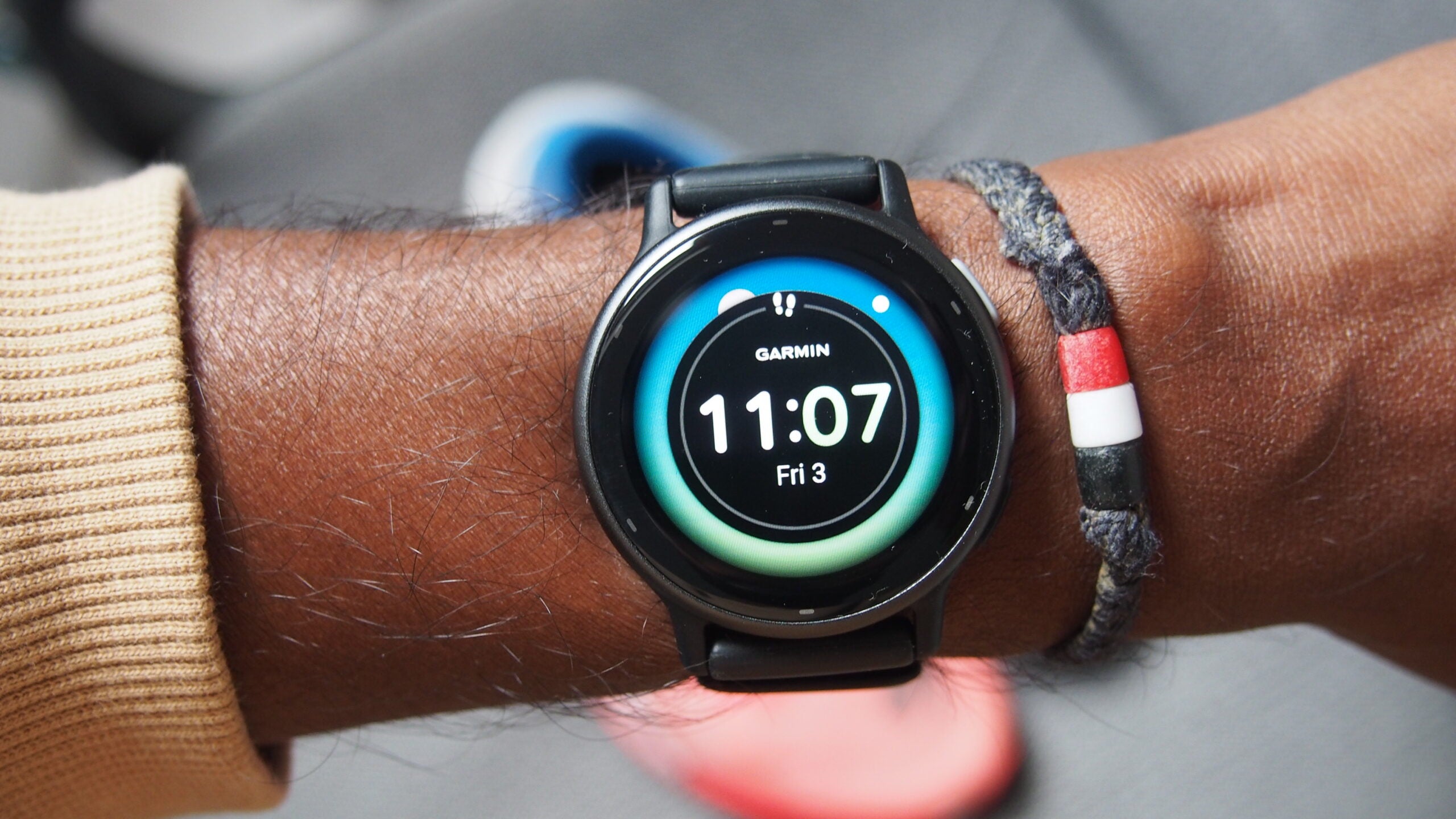Verdict
The Garmin Vivoactive 5 is a solid and more affordable AMOLED sports watch alternative to Garmin’s pricier Venu, which might not match it for smartwatch smarts, but still offers a great experience all round.
Pros
- Sharp AMOLED colour screen
- Solid sports tracking modes
- Well integrated smartwatch features
Cons
- Watch UI still needs some refining
- Can’t track elevation like Vivoactive 4
- Misses out on useful Training Readiness metric
-
30 preloaded sports appsCore running, cycling, swimming and golf tracking modes, but plenty more on offer. -
Up to 11 days battery life Garmin states that the Vivoactive 5 can last for up to 11 days, up from 8 days on the Vivoactive 4. -
Works with Android and iOSNo need to worry about compatibility with support for both Android and iOS phones.
Introduction
The Garmin Vivoactive 5 is the successor to the Vivoactive 4, which launched in 2019, so it’s a little surprising that five years later, Garmin has decided to bring it back.
The headline news is the introduction of an AMOLED display as Garmin continues to bolster the ranks of watches in its collection that pack more colourful, more smartwatch-like screens.
Along with a more colourful display, Garmin has also added new and improved sensors, new training features to make it more useful for working out with, and even boosted the battery life despite adding a more power-hungry display.
It comes in cheaper than Garmin’s AMOLED-packing Venu 3 and watches like the Forerunner 965 and Epix, while it is also competing with smartwatches like the Apple Watch SE and the Samsung Galaxy Watch 6. So does the Vivoactive get you a better sportier smartwatch? Here’s my take.
Design and screen
- Now only one case option
- Vibrant AMOLED touchscreen
- Garmin makes UI changes
The Garmin Vivoactive 5 is a fully round watch that packs a polymer case and is paired up with one of Garmin’s pretty standard 20mm, quick release silicone watch straps. There are four colour options in total and the all-black version I had on my wrist is definitely the more understated version up for grabs.
It’s a pretty light, dainty and very minimal-looking watch, weighing in at 36g, so it’s around the same weight as something like the Samsung Galaxy Watch 6. Garmin is now only offering it in a 42.2mm case size compared to the two size options available with the Vivoactive 4.
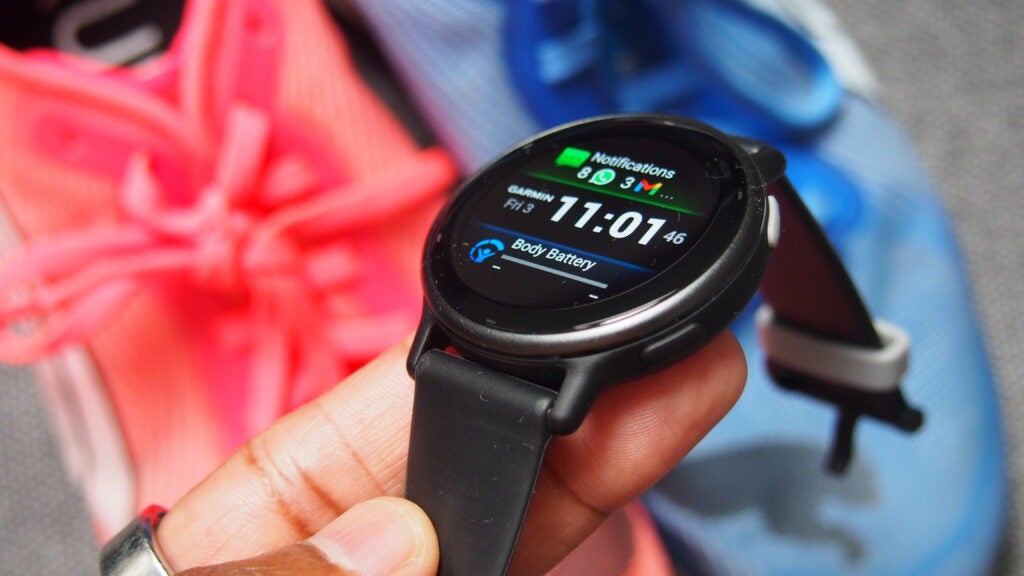
You’ve got two physical buttons on the right side of the case, which joins the new 1.2-inch, 390 x 390 resolution AMOLED display as your means of interacting with the Vivoactive 5. That bright, colourful and vibrant screen is a departure from the transflective screen used on the Vivoactive 4. It’s also one that can be set to stay on at all times, but that does invariably see the watch battery drop quicker.
Along with that added colour, Garmin has also tweaked the software UI with the aim to make it a better fit for using that touchscreen display on a more regular basis. It’s moved the smartwatch features menu in with the workout tracking screen for instance, while firmly pressing the bottom physical button gets you into the main settings menu. Have the changes been a success? I’m not 100% won over by everything here and it feels like Garmin still needs to do a bit of work on this front.
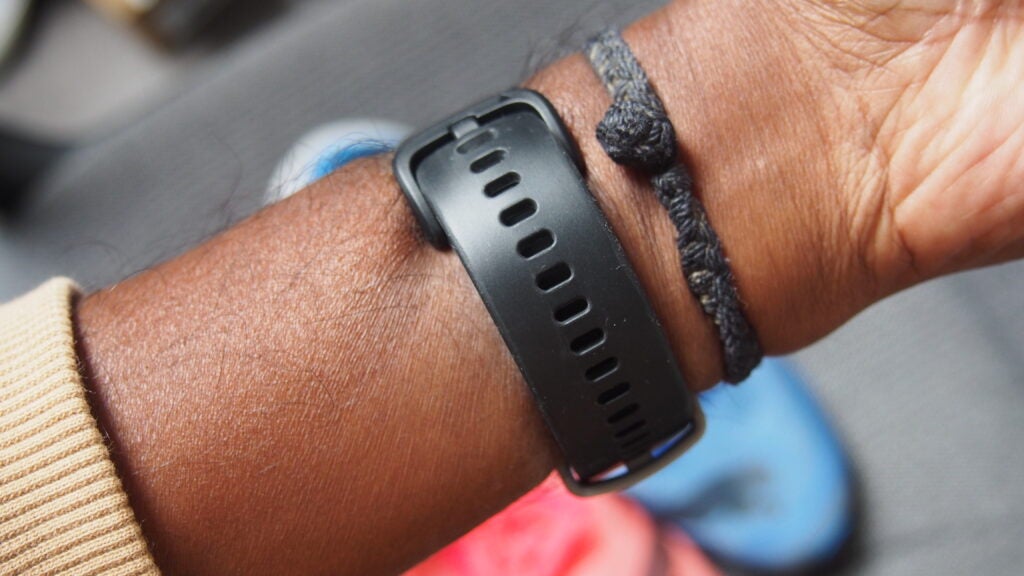
Something that hasn’t changed is the level of waterproofing here. It’s a 5ATM rated design, making it safe for showering and swimming (both pool and open water) and I can confirm it’s passed the showering and swimming test.
Software and features
- Can view images in notifications (Android only)
- Added Morning Reports
- 4GB storage for music and apps
The Garmin Vivoactive 5 gives you access to most, but not all, of Garmin’s smartwatch ecosystem. It still works with Android and iOS, with some added functionality on offer for Android phone owners. Along with being able to respond to calls via text, you can now also view images sent through messages in notifications as well.
You still have access to Garmin Pay, which isn’t as slick as some other payment systems. You can control music playing on your phone and there is 4GB of storage used to store apps from the Connect IQ Store and offer room for the built-in music player, which is compatible with streaming services like Spotify and Deezer to store playlists for offline use.
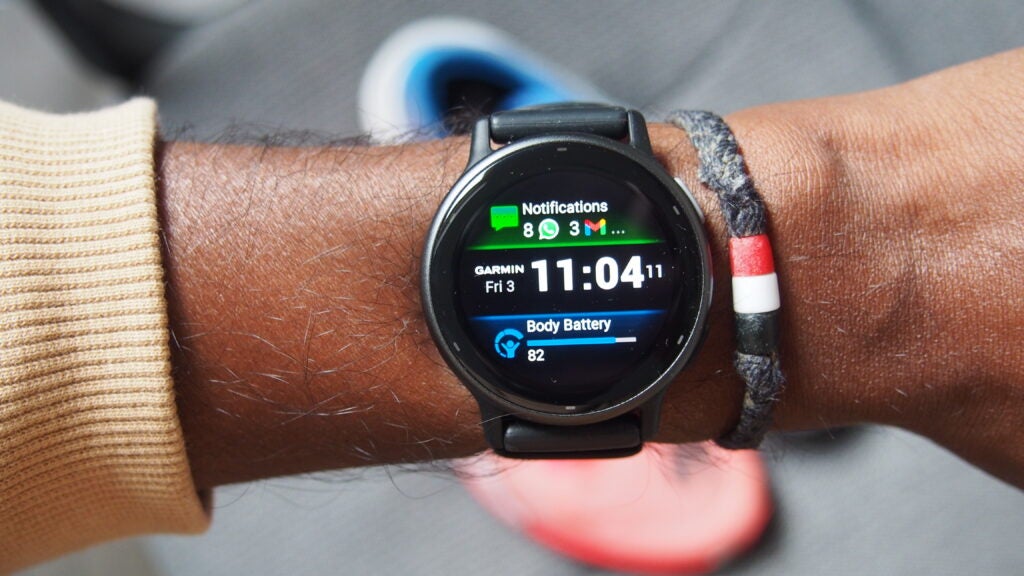
Garmin has added its quite handy Morning Report, which can be customised in the Garmin Connect app to show the information you’d like to see when you first wake up.
Adding an AMOLED screen makes interacting with the latest Vivoactive feel more smartwatch than before and while it lacks the voice-enabled features included on Garmin’s latest Venu series, these aren’t the kind of features that felt sorely missed on a day-to-day basis. It’s a good smartwatch overall and one that will satisfy most, with a few nice extras for Android users.
Fitness tracking
- New Multi GNSS GPS support
- New Gen 4 Elevate heart rate sensor
- Animated workouts dropped
The remit for the Garmin Vivoactive 5 remains the same as the last Vivoactive and is pretty consistent with most Garmin watches. It wants to track your exercise with running, cycling, swimming and golf the core tracking modes. There’s also profiles for the likes of skiing, HIIT and standup paddle boarding. It also wants to behave like a fitness and sleep tracker and offer some of the workout and wellness-based analysis you’ll find on pricier Garmin watches.
Garmin has added and upgraded the sensors that unlock those tracking powers too. It now includes one of Garmin’s Gen 4 Elevate heart rate sensors, though that’s not the latest Gen 5 sensor that’s currently available on the Venu 3. The GPS support has been upgraded to include a multi GNSS setup to improve outdoor tracking accuracy. There’s an added Pulse Ox sensor to monitor blood oxygen saturation at night or be enabled to deliver 24/7 monitoring.
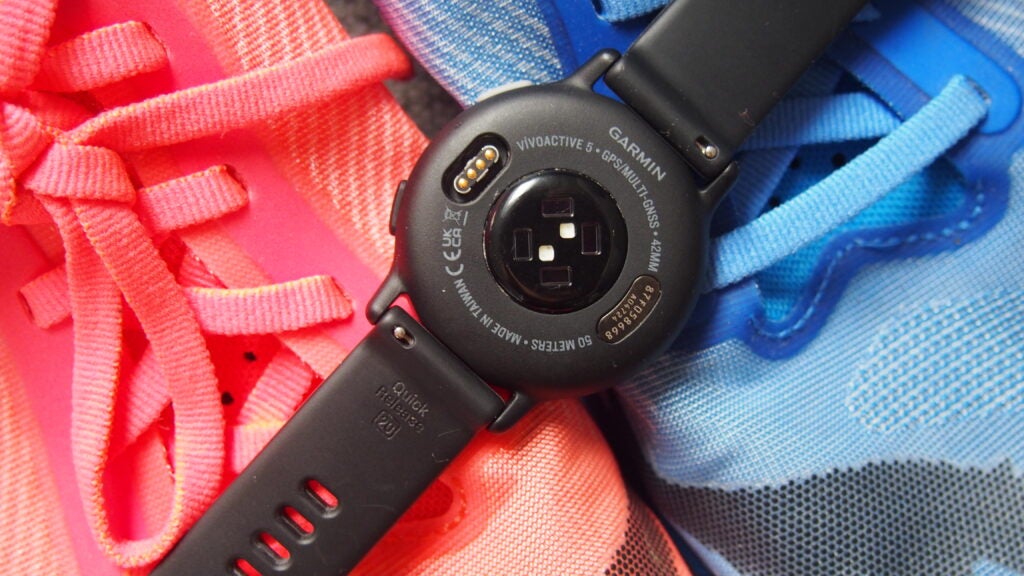
While the Vivoactive 5 doesn’t include Garmin’s newer heart rate or GPS technology, it still does deliver solid results on the accuracy front. The GPS performance, up against the excellent dual-band support on the Apple Watch Ultra 2, fared well for core metrics for activities like running. For heart rate, it falls into that category of sensors that can deliver good accuracy for steady paced workouts, but can post wild spikes for high intensity workouts.
Outside of those core tracking modes, Garmin has decided to bolster the strength training support with a new muscle workout map feature, to better understand if you’ve been strengthening all areas of your body. While that feature is in, the animated workouts feature that Garmin added with the Vivoactive 4 is gone, which does seem like a shame.
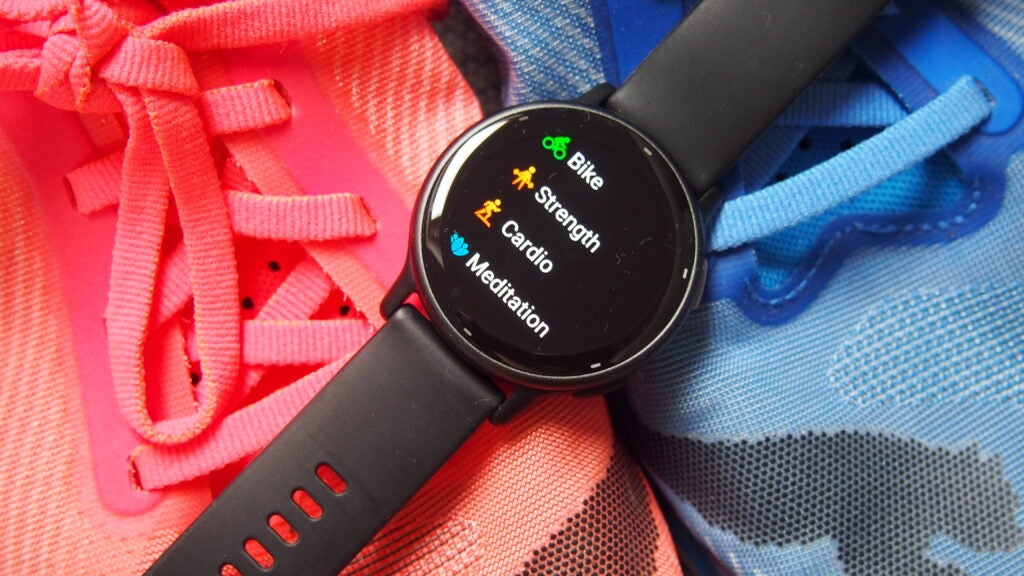
The Garmin Vivoactive 5 simply won’t give you the level of training analysis that its pricier Forerunner watches are capable of, but it does aim to give your data some context. Those are led mainly by the workout benefit and recovery insights and HRV (heart rate variability) status, which is captured during sleep.
The workout benefit insights appear after logged workouts and offer some pretty simple explanations for how that workout can be beneficial for things like relieving stress or boosting energy levels. The HRV status feels a little more complex in isolation from the Training Readiness scores that it accompanies on other Garmin watches and ultimately feels a bit out of place here.
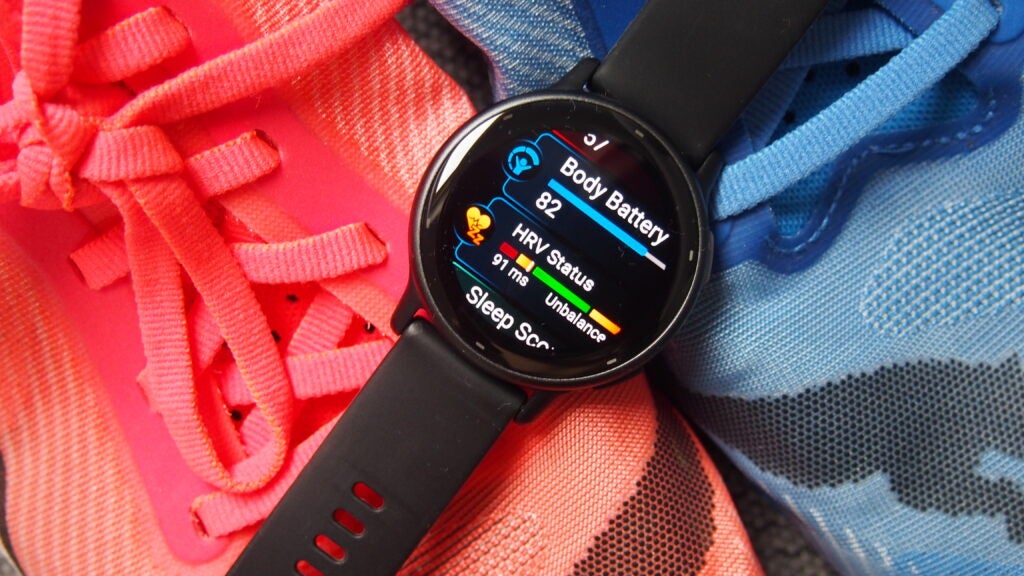
As a fitness tracker, the Vivoactive 5 will count daily steps, nudge you to move more and will automatically adjust daily step goals. It doesn’t, unfortunately, include an altimeter sensor, which means you’ll need to live without having data on floors climbed during your day.
It’ll also track your heart rate, stress, respiration rate and sleep, with the latter adding in a sleep coach to advise on optimal sleep time based on sleep history. It performs well for tracking steps and Garmin’s enhanced Body Battery Energy Monitor feels more involved than previously, giving you updates during the day when Energy levels have been boosted by less stressful periods.
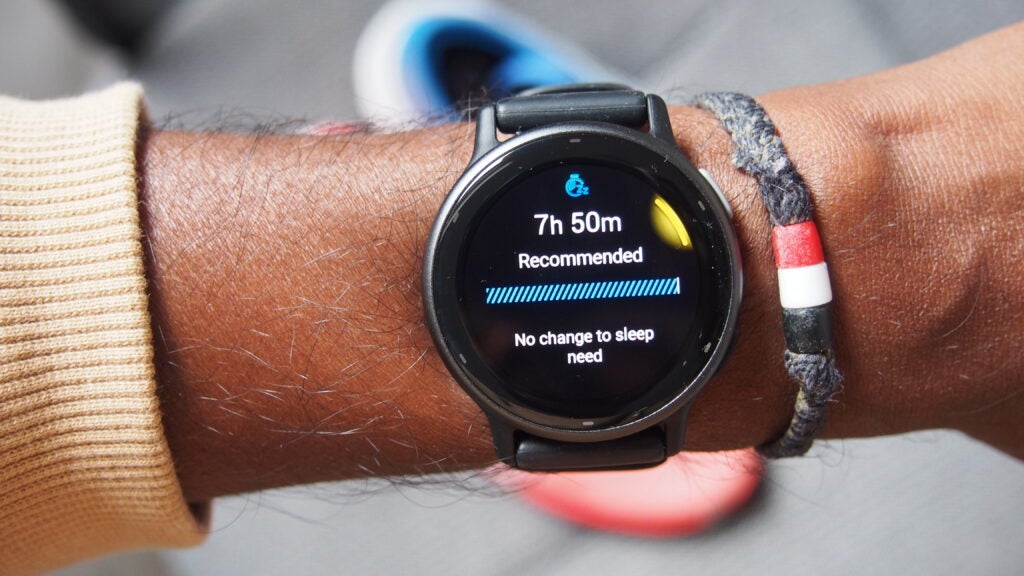
Sleep tracking has its good and bad moments, however. Garmin still has the habit of recording slightly longer sleep periods compared to reliable sleep trackers like the Apple Watch and the Oura Ring Gen 3. You can absolutely get good sleep data with some useful albeit basic coaching insights, but it’s not always perfect.
Battery life
- Up to 11 days in smartwatch mode
- 5 days battery in always-on display mode
- Up to 21 hours GPS battery life
Garmin states that the Vivoactive 5 can last for up to 11 days, up from 8 days on the Vivoactive 4 when you’re using it mainly as a smartwatch. If you opt to switch the ‘raise to wake’ support to ‘keep the screen on at all times’, that drops to 5 days.
I’d say that my time spent with the Vivoactive 5 has seen it last a good week between charges. If you stick the display to always-on, that battery drop is noticeable. Throw in some GPS use and music streaming during that time and it’ll be less than the 5 days that Garmin states.
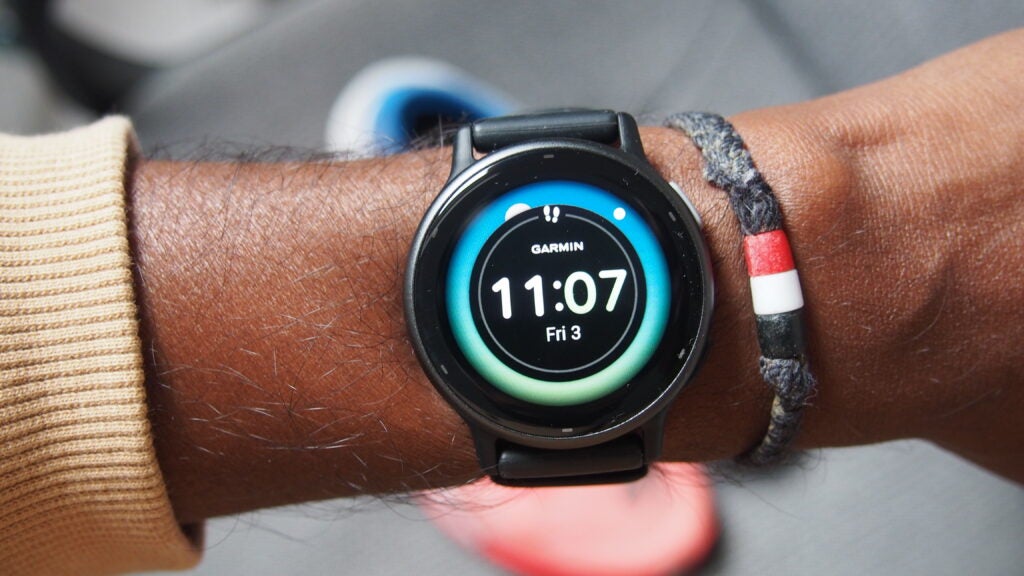
When you do put the GPS to good use, the most accurate mode promises 17 hours of battery life. Add music streaming into the equation and that drops to around 8 hours. If you’re happy to go with the standard GPS mode, that jumps to 21 hours. I used it mainly in that more accurate GPS mode and found that battery drop was around 5% on average for over an hour’s use.
When it is time to charge you’ve got a charging cable that is used on pretty much every Garmin watch these days. It sits relatively securely around the back of the watch, and while not the zippest charger in Garmin’s collection, it doesn’t take too long to give you enough battery to get tracking again.
Latest deals
Should you buy it?
You want a good mix of sports watch and smartwatch
If you’re looking for a watch at a mid range price that performs well for sports tracking and offers good core smartwatch features, the Vivoactive 5 delivers that.
You want the best of Garmin’s training metrics
If you’re looking for all of Garmin’s most advanced training insights and metrics, the Vivoactive 5 sadly misses out on them. Check out the Garmin Venu 3 instead.
Final Thoughts
It felt like a strange move for Garmin to revive the Vivoactive, especially now that it has the Venu.
What the Garmin Vivoactive 5 has done is given us another very well-rounded sports watch with better smartwatch features than most sports watches, along with an AMOLED display that competes and betters a lot of smartwatches at a similar price.
Check out our Best Smartwatch and Best Fitness Tracker guides for more options.
How we test
We thoroughly test every fitness tracker we review. We use industry standard testing to compare features properly and we use the watch as our main device over the review period. We’ll always tell you what we find and we never, ever, accept money to review a product.
Worn as our main tracker during the testing period
Heart rate data compared against dedicated heart rate devices
FAQs
Yes, the Garmin Vivoactive 5 does have built-in GPS and has upgraded from the single band GPS on the Vivoactive 4 to a multi GNSS setup.
Yes, the Garmin Vivoactive 5 is waterproof and it features a 5ATM rated design making it safe to be submerged in water up to 50 metres depth.
Verdict
The Garmin Vivoactive 5 is a solid and more affordable AMOLED sports watch alternative to Garmin’s pricier Venu, which might not match it for smartwatch smarts, but still offers a great experience all round.
Pros
- Sharp AMOLED colour screen
- Solid sports tracking modes
- Well integrated smartwatch features
Cons
- Watch UI still needs some refining
- Can’t track elevation like Vivoactive 4
- Misses out on useful Training Readiness metric
-
30 preloaded sports appsCore running, cycling, swimming and golf tracking modes, but plenty more on offer. -
Up to 11 days battery life Garmin states that the Vivoactive 5 can last for up to 11 days, up from 8 days on the Vivoactive 4. -
Works with Android and iOSNo need to worry about compatibility with support for both Android and iOS phones.
Introduction
The Garmin Vivoactive 5 is the successor to the Vivoactive 4, which launched in 2019, so it’s a little surprising that five years later, Garmin has decided to bring it back.
The headline news is the introduction of an AMOLED display as Garmin continues to bolster the ranks of watches in its collection that pack more colourful, more smartwatch-like screens.
Along with a more colourful display, Garmin has also added new and improved sensors, new training features to make it more useful for working out with, and even boosted the battery life despite adding a more power-hungry display.
It comes in cheaper than Garmin’s AMOLED-packing Venu 3 and watches like the Forerunner 965 and Epix, while it is also competing with smartwatches like the Apple Watch SE and the Samsung Galaxy Watch 6. So does the Vivoactive get you a better sportier smartwatch? Here’s my take.
Design and screen
- Now only one case option
- Vibrant AMOLED touchscreen
- Garmin makes UI changes
The Garmin Vivoactive 5 is a fully round watch that packs a polymer case and is paired up with one of Garmin’s pretty standard 20mm, quick release silicone watch straps. There are four colour options in total and the all-black version I had on my wrist is definitely the more understated version up for grabs.
It’s a pretty light, dainty and very minimal-looking watch, weighing in at 36g, so it’s around the same weight as something like the Samsung Galaxy Watch 6. Garmin is now only offering it in a 42.2mm case size compared to the two size options available with the Vivoactive 4.

You’ve got two physical buttons on the right side of the case, which joins the new 1.2-inch, 390 x 390 resolution AMOLED display as your means of interacting with the Vivoactive 5. That bright, colourful and vibrant screen is a departure from the transflective screen used on the Vivoactive 4. It’s also one that can be set to stay on at all times, but that does invariably see the watch battery drop quicker.
Along with that added colour, Garmin has also tweaked the software UI with the aim to make it a better fit for using that touchscreen display on a more regular basis. It’s moved the smartwatch features menu in with the workout tracking screen for instance, while firmly pressing the bottom physical button gets you into the main settings menu. Have the changes been a success? I’m not 100% won over by everything here and it feels like Garmin still needs to do a bit of work on this front.

Something that hasn’t changed is the level of waterproofing here. It’s a 5ATM rated design, making it safe for showering and swimming (both pool and open water) and I can confirm it’s passed the showering and swimming test.
Software and features
- Can view images in notifications (Android only)
- Added Morning Reports
- 4GB storage for music and apps
The Garmin Vivoactive 5 gives you access to most, but not all, of Garmin’s smartwatch ecosystem. It still works with Android and iOS, with some added functionality on offer for Android phone owners. Along with being able to respond to calls via text, you can now also view images sent through messages in notifications as well.
You still have access to Garmin Pay, which isn’t as slick as some other payment systems. You can control music playing on your phone and there is 4GB of storage used to store apps from the Connect IQ Store and offer room for the built-in music player, which is compatible with streaming services like Spotify and Deezer to store playlists for offline use.

Garmin has added its quite handy Morning Report, which can be customised in the Garmin Connect app to show the information you’d like to see when you first wake up.
Adding an AMOLED screen makes interacting with the latest Vivoactive feel more smartwatch than before and while it lacks the voice-enabled features included on Garmin’s latest Venu series, these aren’t the kind of features that felt sorely missed on a day-to-day basis. It’s a good smartwatch overall and one that will satisfy most, with a few nice extras for Android users.
Fitness tracking
- New Multi GNSS GPS support
- New Gen 4 Elevate heart rate sensor
- Animated workouts dropped
The remit for the Garmin Vivoactive 5 remains the same as the last Vivoactive and is pretty consistent with most Garmin watches. It wants to track your exercise with running, cycling, swimming and golf the core tracking modes. There’s also profiles for the likes of skiing, HIIT and standup paddle boarding. It also wants to behave like a fitness and sleep tracker and offer some of the workout and wellness-based analysis you’ll find on pricier Garmin watches.
Garmin has added and upgraded the sensors that unlock those tracking powers too. It now includes one of Garmin’s Gen 4 Elevate heart rate sensors, though that’s not the latest Gen 5 sensor that’s currently available on the Venu 3. The GPS support has been upgraded to include a multi GNSS setup to improve outdoor tracking accuracy. There’s an added Pulse Ox sensor to monitor blood oxygen saturation at night or be enabled to deliver 24/7 monitoring.

While the Vivoactive 5 doesn’t include Garmin’s newer heart rate or GPS technology, it still does deliver solid results on the accuracy front. The GPS performance, up against the excellent dual-band support on the Apple Watch Ultra 2, fared well for core metrics for activities like running. For heart rate, it falls into that category of sensors that can deliver good accuracy for steady paced workouts, but can post wild spikes for high intensity workouts.
Outside of those core tracking modes, Garmin has decided to bolster the strength training support with a new muscle workout map feature, to better understand if you’ve been strengthening all areas of your body. While that feature is in, the animated workouts feature that Garmin added with the Vivoactive 4 is gone, which does seem like a shame.

The Garmin Vivoactive 5 simply won’t give you the level of training analysis that its pricier Forerunner watches are capable of, but it does aim to give your data some context. Those are led mainly by the workout benefit and recovery insights and HRV (heart rate variability) status, which is captured during sleep.
The workout benefit insights appear after logged workouts and offer some pretty simple explanations for how that workout can be beneficial for things like relieving stress or boosting energy levels. The HRV status feels a little more complex in isolation from the Training Readiness scores that it accompanies on other Garmin watches and ultimately feels a bit out of place here.

As a fitness tracker, the Vivoactive 5 will count daily steps, nudge you to move more and will automatically adjust daily step goals. It doesn’t, unfortunately, include an altimeter sensor, which means you’ll need to live without having data on floors climbed during your day.
It’ll also track your heart rate, stress, respiration rate and sleep, with the latter adding in a sleep coach to advise on optimal sleep time based on sleep history. It performs well for tracking steps and Garmin’s enhanced Body Battery Energy Monitor feels more involved than previously, giving you updates during the day when Energy levels have been boosted by less stressful periods.

Sleep tracking has its good and bad moments, however. Garmin still has the habit of recording slightly longer sleep periods compared to reliable sleep trackers like the Apple Watch and the Oura Ring Gen 3. You can absolutely get good sleep data with some useful albeit basic coaching insights, but it’s not always perfect.
Battery life
- Up to 11 days in smartwatch mode
- 5 days battery in always-on display mode
- Up to 21 hours GPS battery life
Garmin states that the Vivoactive 5 can last for up to 11 days, up from 8 days on the Vivoactive 4 when you’re using it mainly as a smartwatch. If you opt to switch the ‘raise to wake’ support to ‘keep the screen on at all times’, that drops to 5 days.
I’d say that my time spent with the Vivoactive 5 has seen it last a good week between charges. If you stick the display to always-on, that battery drop is noticeable. Throw in some GPS use and music streaming during that time and it’ll be less than the 5 days that Garmin states.

When you do put the GPS to good use, the most accurate mode promises 17 hours of battery life. Add music streaming into the equation and that drops to around 8 hours. If you’re happy to go with the standard GPS mode, that jumps to 21 hours. I used it mainly in that more accurate GPS mode and found that battery drop was around 5% on average for over an hour’s use.
When it is time to charge you’ve got a charging cable that is used on pretty much every Garmin watch these days. It sits relatively securely around the back of the watch, and while not the zippest charger in Garmin’s collection, it doesn’t take too long to give you enough battery to get tracking again.
Latest deals
Should you buy it?
You want a good mix of sports watch and smartwatch
If you’re looking for a watch at a mid range price that performs well for sports tracking and offers good core smartwatch features, the Vivoactive 5 delivers that.
You want the best of Garmin’s training metrics
If you’re looking for all of Garmin’s most advanced training insights and metrics, the Vivoactive 5 sadly misses out on them. Check out the Garmin Venu 3 instead.
Final Thoughts
It felt like a strange move for Garmin to revive the Vivoactive, especially now that it has the Venu.
What the Garmin Vivoactive 5 has done is given us another very well-rounded sports watch with better smartwatch features than most sports watches, along with an AMOLED display that competes and betters a lot of smartwatches at a similar price.
Check out our Best Smartwatch and Best Fitness Tracker guides for more options.
How we test
We thoroughly test every fitness tracker we review. We use industry standard testing to compare features properly and we use the watch as our main device over the review period. We’ll always tell you what we find and we never, ever, accept money to review a product.
Worn as our main tracker during the testing period
Heart rate data compared against dedicated heart rate devices
FAQs
Yes, the Garmin Vivoactive 5 does have built-in GPS and has upgraded from the single band GPS on the Vivoactive 4 to a multi GNSS setup.
Yes, the Garmin Vivoactive 5 is waterproof and it features a 5ATM rated design making it safe to be submerged in water up to 50 metres depth.



















